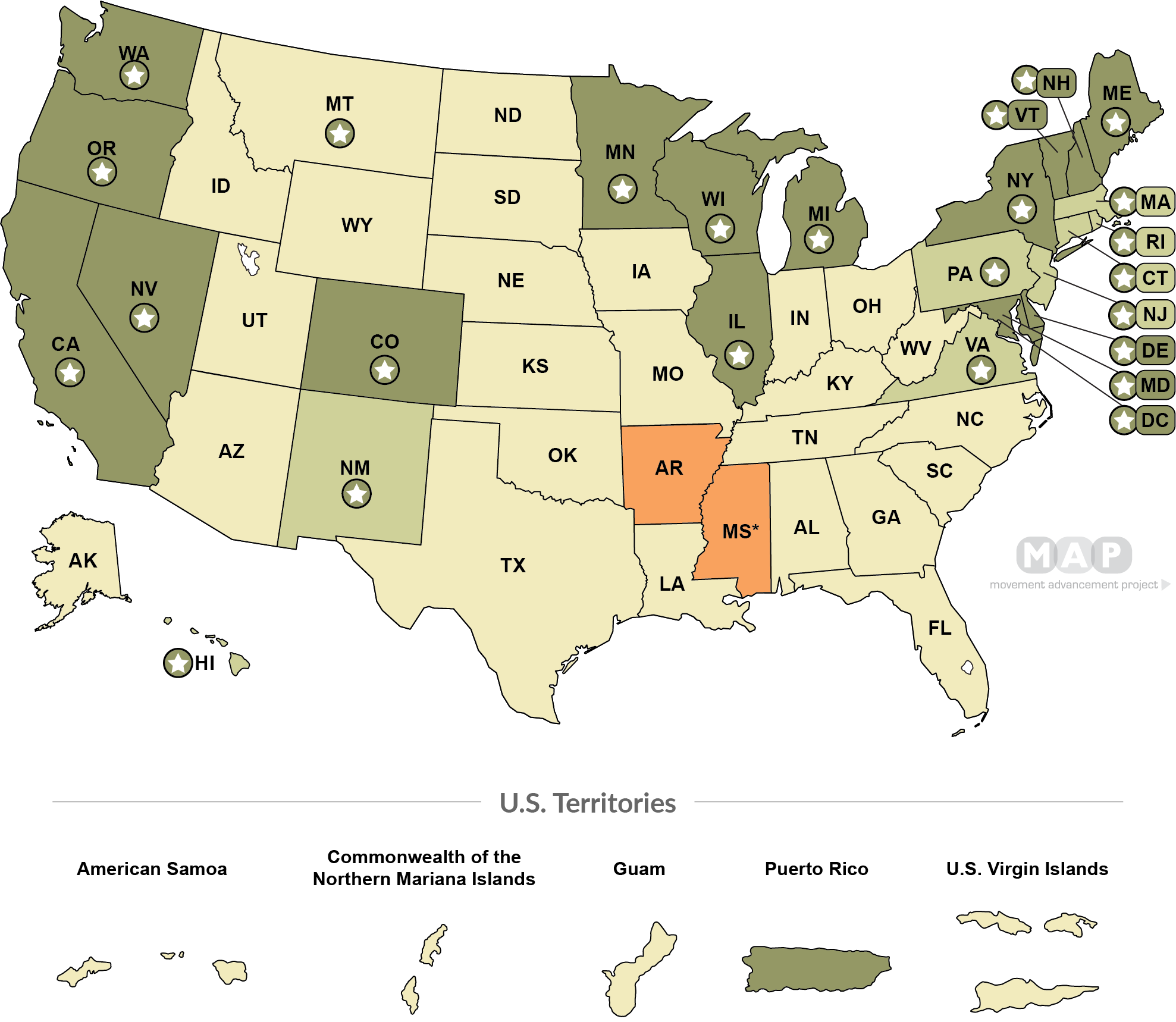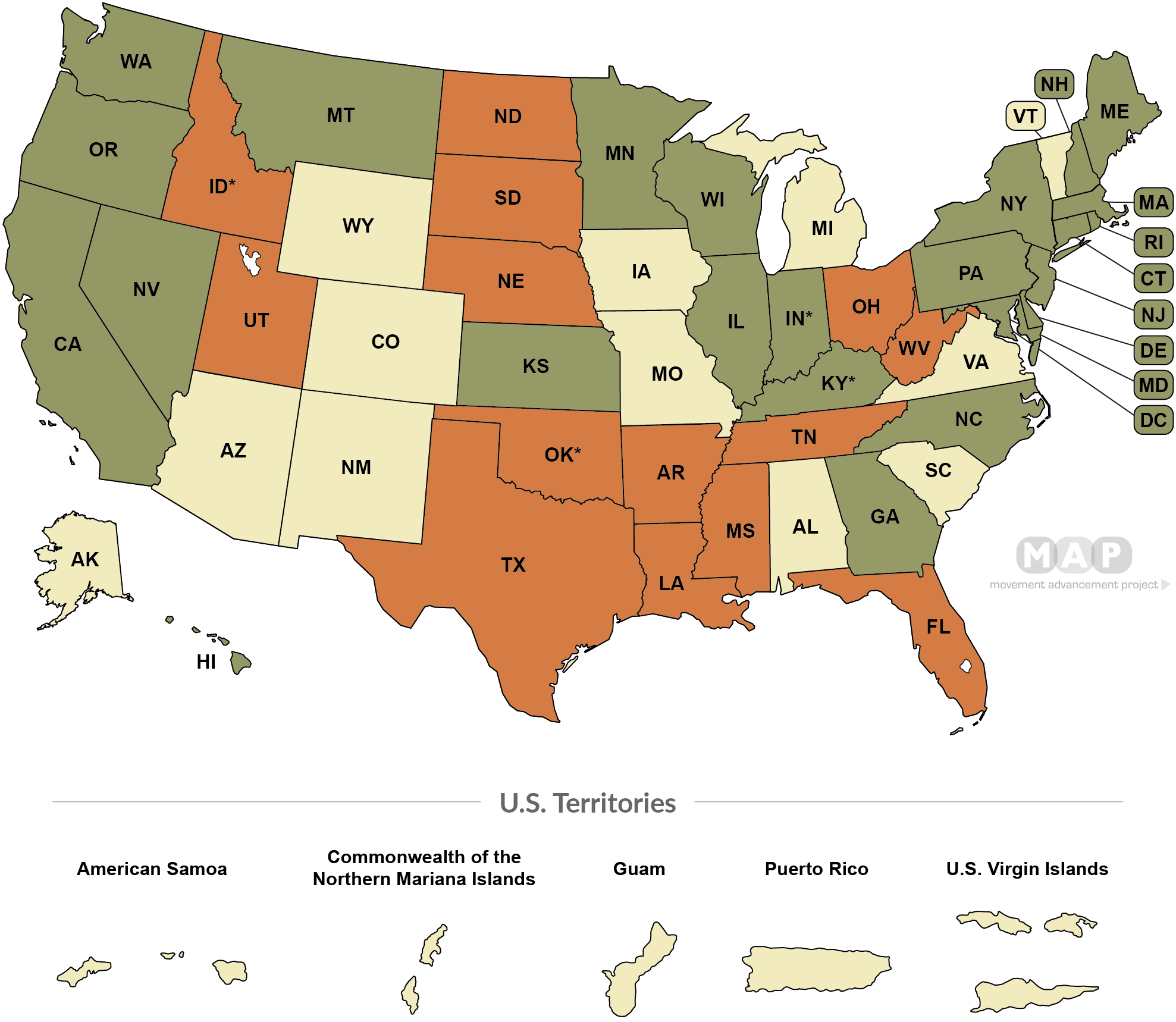| State |
Private Insurance
Nondiscrimination |
Transgender Inclusive Health Benefits for State Employees |
| |
Citations
|
Citations
|
| Alabama |
|
|
| Alaska |
|
|
| American Samoa |
|
|
| Arizona |
|
|
| Arkansas |
|
State does not have this law |
| California |
State has law that covers sexual orientation and gender identity  |
State has this law |
| Colorado |
State has law that covers sexual orientation and gender identity  |
|
| Connecticut |
State has law that covers gender identity  |
State has this law |
| Delaware |
State has law that covers sexual orientation and gender identity  |
State has this law |
| District of Columbia |
State has law that covers sexual orientation and gender identity  |
State has this law |
| Florida |
|
State does not have this law |
| Georgia |
|
State has this law |
| Guam |
|
|
| Hawaii |
State has law that covers gender identity  |
State has this law |
| Idaho |
|
State does not have this law |
| Illinois |
State has law that covers sexual orientation and gender identity  |
State has this law |
| Indiana |
|
State has this law |
| Iowa |
|
|
| Kansas |
|
State has this law |
| Kentucky |
|
State has this law |
| Louisiana |
|
State does not have this law |
| Maine |
State has law that covers sexual orientation and gender identity  |
State has this law |
| Maryland |
State has law that covers sexual orientation and gender identity  |
State has this law |
| Massachusetts |
State has law that covers gender identity  |
State has this law |
| Michigan |
State has law that covers sexual orientation and gender identity  |
|
| Minnesota |
State has law that covers sexual orientation and gender identity  |
State has this law |
| Mississippi |
|
State does not have this law |
| Missouri |
|
|
| Montana |
 |
State has this law |
| Nebraska |
|
State does not have this law |
| Nevada |
State has law that covers sexual orientation and gender identity  |
State has this law |
| New Hampshire |
State has law that covers sexual orientation and gender identity  |
State has this law |
| New Jersey |
State has law that covers gender identity  |
State has this law |
| New Mexico |
State has law that covers gender identity  |
|
| New York |
State has law that covers sexual orientation and gender identity  |
State has this law |
| North Carolina |
|
State has this law |
| North Dakota |
|
State does not have this law |
| Northern Mariana Islands |
|
|
| Ohio |
|
State does not have this law |
| Oklahoma |
|
State does not have this law |
| Oregon |
State has law that covers sexual orientation and gender identity  |
State has this law |
| Pennsylvania |
State has law that covers gender identity  |
State has this law |
| Puerto Rico |
State has law that covers sexual orientation and gender identity |
|
| Rhode Island |
State has law that covers gender identity  |
State has this law |
| South Carolina |
|
State does not have this law |
| South Dakota |
|
State does not have this law |
| Tennessee |
|
State does not have this law |
| Texas |
|
State does not have this law |
| U.S. Virgin Islands |
|
|
| Utah |
|
State does not have this law |
| Vermont |
State has law that covers sexual orientation and gender identity  |
|
| Virginia |
State has law that covers gender identity  |
|
| Washington |
State has law that covers sexual orientation and gender identity  |
State has this law |
| West Virginia |
|
|
| Wisconsin |
State has law that covers sexual orientation and gender identity  |
State has this law |
| Wyoming |
|
|





